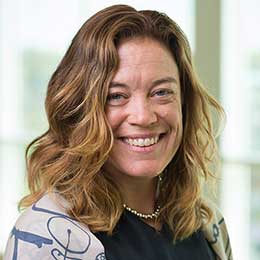
Patricia George, MD

Patricia George, MD

Patricia George, MD
As a physician specializing in pulmonary hypertension (PH), Marjorie (Patricia) George, MD, was disappointed by the information available online for patients with presumptive PH.
“I applied for the [CHEST] grant to create a reliable source of patient-facing information for pulmonary hypertension,” said Dr. George, who is an Associate Professor and the Director of the Pulmonary Hypertension Program at National Jewish Health. “Too many patients come to me having researched PH and have a dire outlook on the future. The truth is, not all types of PH are the same, and the information available should be a lot more inclusive of the variations.”
Dr. George was inspired by a website called CardioSmart that outlines a variety of cardiac issues in a way that is easy to navigate and simple for a layperson to understand.
“The cardiac site had a lot of qualities I wanted to emulate for a site on pulmonary hypertension,” said Dr. George. “Not only was it written for patients and their caregivers, but it provided useful, tangible tools like infographics, decision aids, and action plans. With these tools in hand, a patient would be able to competently serve as their own well-informed advocate. Patients needed something like this for PH.”
Through the support of the Community Impact Grant honoring D. Robert McCaffree, MD, Master FCCP, Dr. George and her colleagues from the nonprofit she launched, Team PHenomenal Hope, built LearnLiveBreathePH.org to serve as a resource for patients. Aptly launched on Rare Disease Day, February 28, 2023, the intent of the website is to inform patients and help them identify three questions for their clinicians:
- Do I have PH?
- If so, what type?
- What is the proposed treatment plan?
With comprehensive sections on types of PH, medication used to manage PH, and holistic approaches to living well, the goal of this website is to help patients learn about various aspects of the disease. It’s also intended to serve as a resource for caregivers.
The site can be translated to a variety of languages, including Spanish, Arabic, and Russian, making it accessible to a variety of patients both nationally and internationally.
Help spread the word by visiting LearnLiveBreathePH.org and sharing it with your patients as a resource for PH.